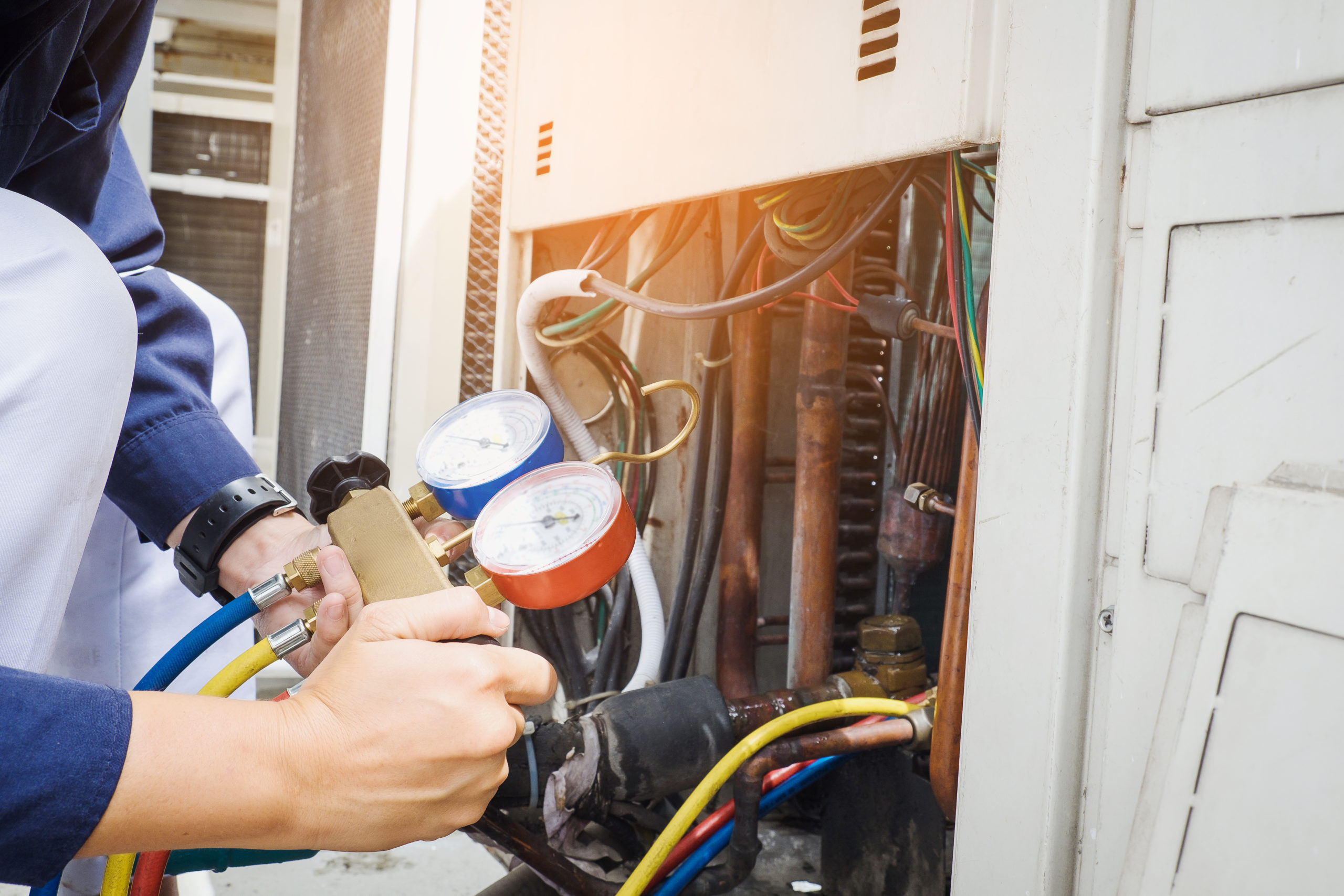Even with the right unit and proper installation, there’s always the chance that your furnace will malfunction. While some problems are caused by normal wear and tear, most can be traced to inconsistent maintenance. Furnace issues can wreak havoc in your living space, especially during the colder months when you really need to heat your interior. It’s helpful to know how to troubleshoot common issues so you can decide what to take care of yourself and what to let a professional handle.
Below is an overview of common repair and maintenance problems, how to troubleshoot them and key maintenance tips:
General furnace maintenance tips
To avoid inconveniences and costly repairs, make sure to regularly maintain your furnace. Do these things to keep it running efficiently:
Change the filter every three months
Changing the filter is one of the simplest but most important maintenance tasks you can perform. The filter protects the blower fan from dust that compromises your indoor air quality. Cleaning and changing the filter every three months will improve indoor air quality and help prolong the life of the furnace.
Check any recommended wire connections and temperature gauges
Connection issues along the line that supplies power to your furnace can compromise the performance of the unit. Loose, faulty or missing wires will cause the thermostat to lose its connection to the unit and interrupt service. Part of maintaining your furnace involves checking the recommended connections as well as temperature and pressure gauges. Take time to inspect these parts for dust and damage, making sure that they are tight and secure.
Turn on unit once every season it is not in use
It’s tough to pick up on any problems if the furnace is off. Power it up at least once each season and monitor the thermostat to ensure it’s working properly. Turning on the unit allows you to detect common problems such as accumulated dust on the filters, burning smells, leaking carbon monoxide and other warning signs. This will allow you to address problems before they become worse.
Schedule yearly maintenance with an HVAC professional
You should have an HVAC professional to inspect your heating system and carry out maintenance work every year. Professional furnace maintenance will involve cleaning the outdoor unit, fan blades, coil and blower. The expert will also check for cracks, wear and tear and signs of future problems. The motor parts will be lubricated and the furnace tuned-up to ensure enhanced comfort and efficiency.
Regular maintenance goes a long way toward ensuring that all parts are functioning well. It also allows timely repair or replacement of damaged components. Regularly scheduled maintenance both improves the furnace’s efficiency and extends its life.
Clean the vents and ductwork
Make sure that no objects are blocking the vents to ensure that air will flow freely and circulate in your home. Cleaning the vents and ductwork will keep the system working properly and prevent it from getting damaged.
Common furnace problems
Furnace is not producing heat
There are many reasons why this can happen. The good news is that you can address many of these factors on your own without the need to call for professional help. Start by opening the heat registers and then move on to checking the thermostat settings. Next, check the furnace power, reset the furnace or check the service door cover. You can also inspect the filter to make sure it is clear of dirt and check the standing pilot light to make sure it is lit.
Furnace is not producing enough heat
If you notice a decline in heat output, first make sure the air filter is clean and in good condition. Next, inspect other components of the furnace for any build-up of dirt, dust and debris, an inexpensive fix that can help boost performance. Also, check the vents and ducts for obstruction. Finally, make sure the thermostat is working and positioned properly. Try moving it away from direct sunlight since this may affect temperature readings on the thermostat and cause it to misread the temperature in your home. If this happens, your thermostat will shut off the furnace too early and leave your house feeling cold. You may also need to check your insulation to make sure that warm air does not escape from your space through various openings.
Odd noises from the furnace or ducts
Squeaking, rumbling, grinding, pinging and rattling noises are all signs of a mechanical issue, clogged burner or airflow reduction. Loud rattling noises could mean that the blower motor needs to be lubricated while squealing could point to a loose or damaged blower belt. A loose blower can result in loud clanking or scraping while dirty burners will produce a loud bang. Lastly, grinding sounds may be a sign that motor bearings need to be repaired.
Since it can be difficult to establish the cause of the odd sounds without experience, get a technician to inspect the unit and fix the issues.
Furnace runs continuously
One of the main reasons a furnace will run constantly is because something is dirty or clogged. Before trying to fix any problem, take time to make sure that the thermostat settings are not at “continuous fan”. If the air filter is good to go, check the furnace blower for clogging and clean it. If this does not work, have a look at the furnace blower motor and lubricate it. If you still cannot figure out why your furnace keeps running, contact an experienced technician.
Furnace is not blowing air
If the furnace is not blowing air, there are several steps you will need to take. First, make sure that the blower is free of debris and confirm your thermostat is set to the correct temperature. Before cleaning the air filter, check the furnace circuit breakers to ensure there is a power supply.
As always, if you cannot fix a furnace issue on your own, call in an HVAC professional. A competent pro can accurately diagnose the malfunction and recommend tips on how to keep your furnace in peak condition.


